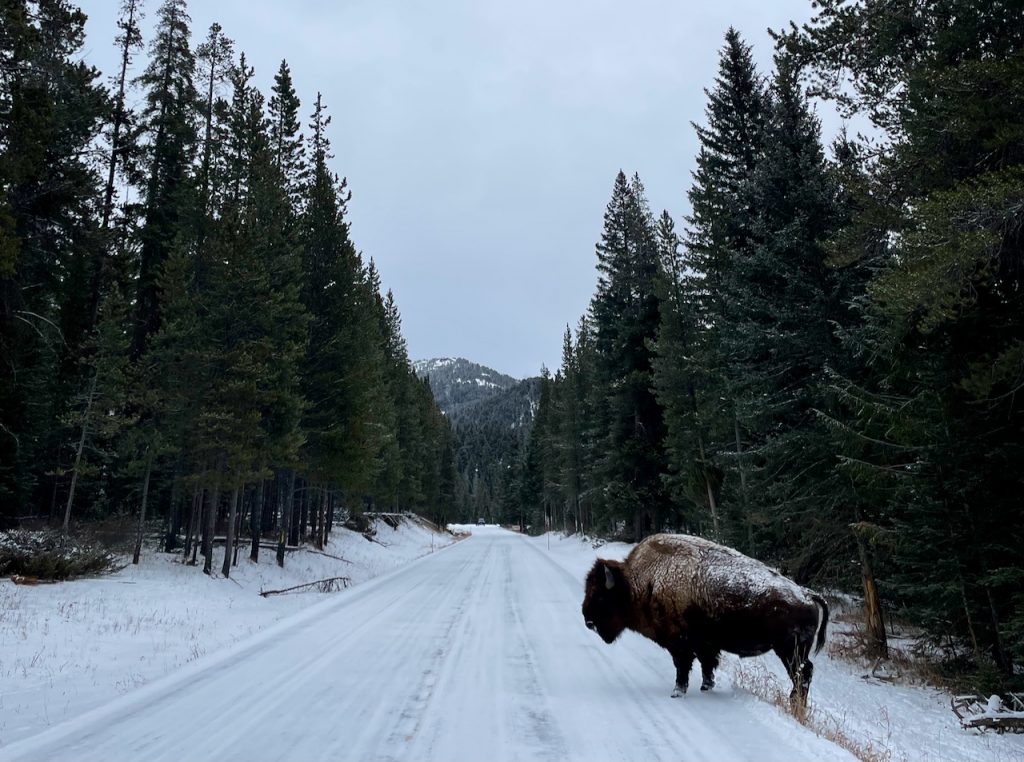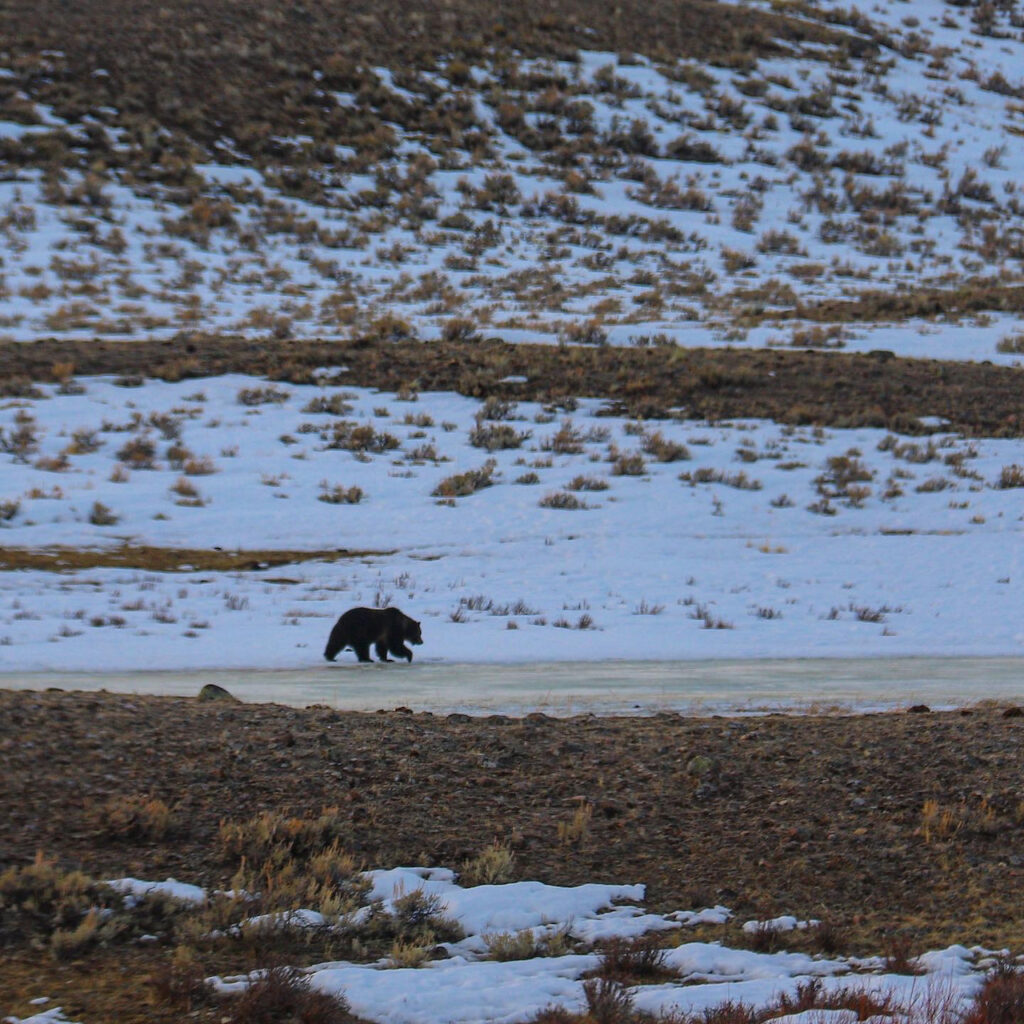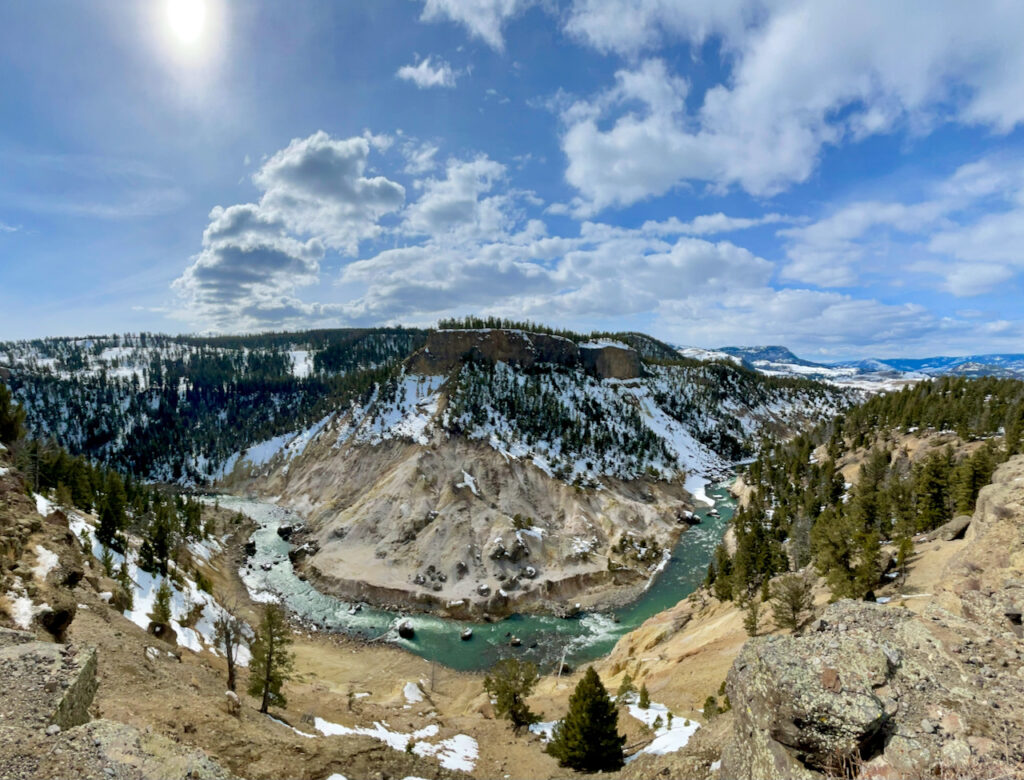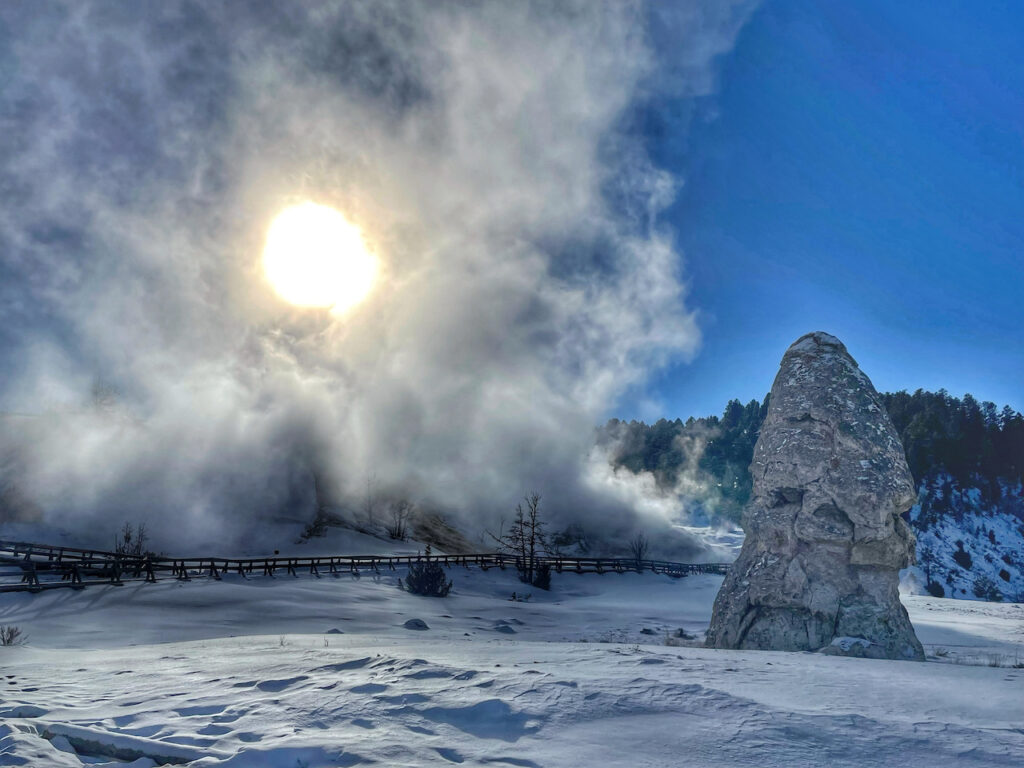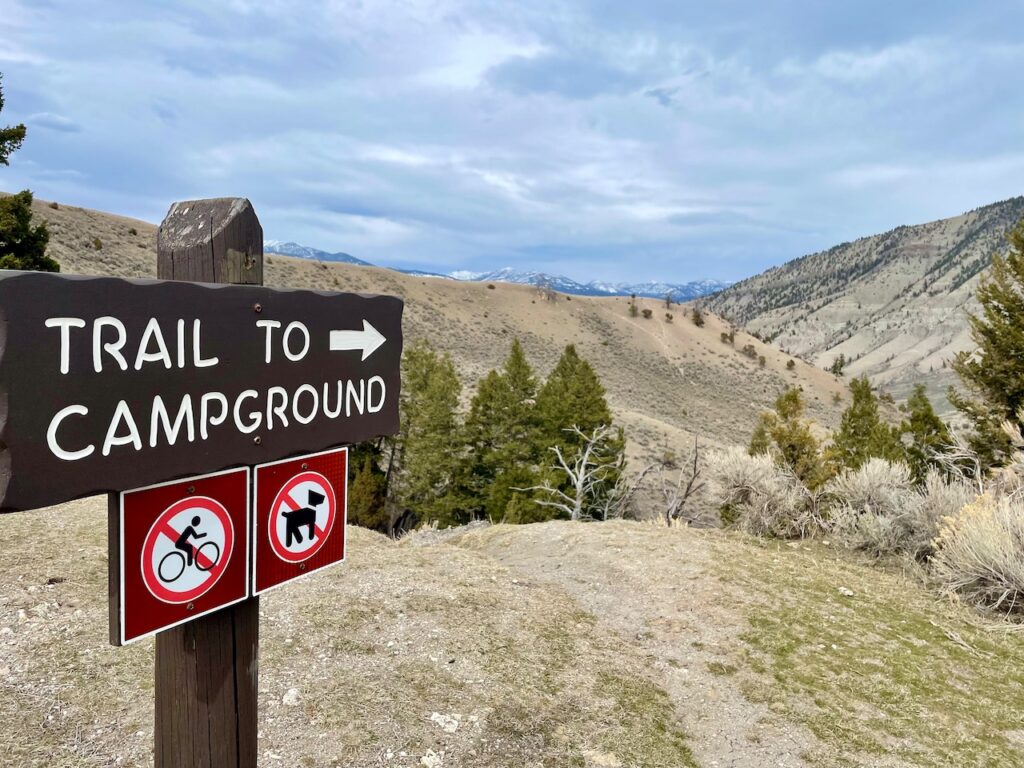So, you are coming to Yellowstone in March. What should you expect?
Historically, the month of March is Yellowstone’s 3rd least visited month, making it a fantastic time to visit if you are hoping to avoid the busy months. While many of the park’s amenities, destinations, and available adventures will be closed in March, plenty of amazing sights and experiences await.
If you are heading to the park in March, this is what you need to know:
Road Conditions
While most of the country will be preparing for the deluge of spring weather, seeing the start of plants budding and birds returning, Yellowstone National Park and the surrounding region will still be experiencing snow storms, nighttime temperatures around zero, and weather that most of the country sees during the coldest of winter days. Because of this, the roads may still be slightly snowy and icy in places.
The only park road open to personal vehicle travel in March is the road from Gardiner, Montana to Cooke City, Montana. This road, which is open throughout the year, passes through Mammoth Hot Springs and the world-famous Lamar Valley, as well as giving views and access to the mountainous and rugged Northern Range. The park plows this road as often as possible, doing an incredible job at keeping it drivable as the snows drift, melt, and refreeze.
It is important to not expect the road to be in pristine shape when you visit Yellowstone in March. You’ll still encounter patches of snow and compact ice on the road for most of the month. Drive slow, give plenty of room to the car ahead of you, and always watch for wildlife, as it will jump out on the road at any moment.
The later in the month you get, the better the road is, in theory. However, it will probably snow often, so just expect winter driving conditions and you won’t be surprised.
Oversnow Travel Closures
Starting on March 2nd, 2025, the interior roads close to slowcoaches and snowmobiles. By March 15th, all interior travel will stop until roads begin to open to individual vehicles in late April.
The following dates, found on the official website for Yellowstone, are when over-snow travel stops for the winter in Yellowstone National Park.
- March 2: Mammoth Hot Springs to Norris
- March 4: Norris to Madison and Norris to Canyon Village
- March 9: Canyon Village to Fishing Bridge
- March 15: All remaining groomed roads close
Wildlife Watching
Many professional wildlife photographers in the region tend to leave in March, as they feel the conditions are no longer good. That is their loss. March is the time when I usually have some of my most memorable wildlife sightings of the year. Be it bears, wolves, pronghorn, bighorn sheep, or bison, the experiences I have had in March have me eager for its return each year. You’ll also have a chance to see the return of numerous bird species, including the western meadowlark and the Rocky Mountain bluebird.
The highlight for many during March is the return of bear sightings. Grizzly bears typically start to emerge from torpor early in the month, and sightings increase by the week. By the end of the month, those who drive the road between Mammoth Hot Springs and Cooke City, Montana have a pretty good chance of seeing a bear.
Wolf sightings are also pretty good in March, as the animals who are not quite strong enough from a winter of struggling to find food get picked off with relative ease. In recent years, the spotting of wolves has been best near Slough Creek and out near Hellroaring Peak. If you see a bunch of people with spotting scopes set up at one of the pullouts along the road, stop. More than likely they are watching wolves or bears.
I have also written a guidebook for wildlife watching in the park, giving you the best locations for every animal you hope to see. Consider buying an ebook or purchasing a physical copy. It is based on 35+ years of wildlife watching in the park.
March Hiking Conditions in Yellowstone
If you are looking for snow-free days on the trails, you probably won’t have much luck in March. Instead, you’ll more than likely be snowshoeing or cross-country skiing around the trails. Toward the end of the month, some places may see exposed ground as the snow starts to melt away, but that comes with its issues- mud.
Your best bet for an enjoyable hike/snowshoe will be along the closed roads, either up to Tower Falls, down to Slough Creek, around the Upper Terraces at Mammoth, or along the Blacktail Deer Plateau Road. Near the end of the month, the road from Mammoth to Norris will be open for those on foot or a bike, but the date is still not announced, as it depends on the snow removal process.
Those hoping for something a little more adventurous should contact me. I can direct you to or even take you on a guided trip to some pretty spectacular backcountry destinations, even if it is snowy out. I provide a myriad of hiking/snowshoeing opportunities and would love to show you around. I provide the snowshoes too! If you’d rather hike on your own, I also have a hiking guidebook to the region, both in ebook and paperback formats.
Typical Weather for Yellowstone in March
March is a wild weather month in the Rockies. One day it may be in the 50s and sunny, the next it may be in the single digits and dumping snow. There is no accurate way to properly predict exactly what you will experience when visiting the park in March, but there are some generalities that will help you be prepared for whatever may occur.
It will, more than likely, be cold. Bring layers to put on or take off, depending on the day. Loves, hats, warm jackets, and warm pants are a must. Even on day trips to the park, I tend to bring a backpack full of other clothes to wear, just in case the weather in the park is different than I expected.
A rule of thumb for the weather in Yellowstone is to expect colder temperatures the closer you get to the mountains around Cooke City. Cooke City will usually be colder and snowier than Mammoth, with the temperature dropping and snow building in intensity every few miles you travel east.
Camping in the Park in March
Mammoth Hot Springs Campground is your only front-country camping option inside Yellowstone National Park during March.
Those hoping to do backcountry camping in the snow need to check with the backcountry office in Yellowstone National Park to make sure that you can go to the area you are hoping to enjoy and get a permit. Heads up! Many backcountry areas in the park will be closed for bear management.
Even outside of the park, most campgrounds are closed and will not be opening until April or May, possibly even June. If you are heading to the area with hopes to camp somewhere, send me a message and I can recommend a few very primitive spots in the nearby National Forests. Be aware that many of the dirt roads leading into these areas could still see substantial snow on the road and be impassible.
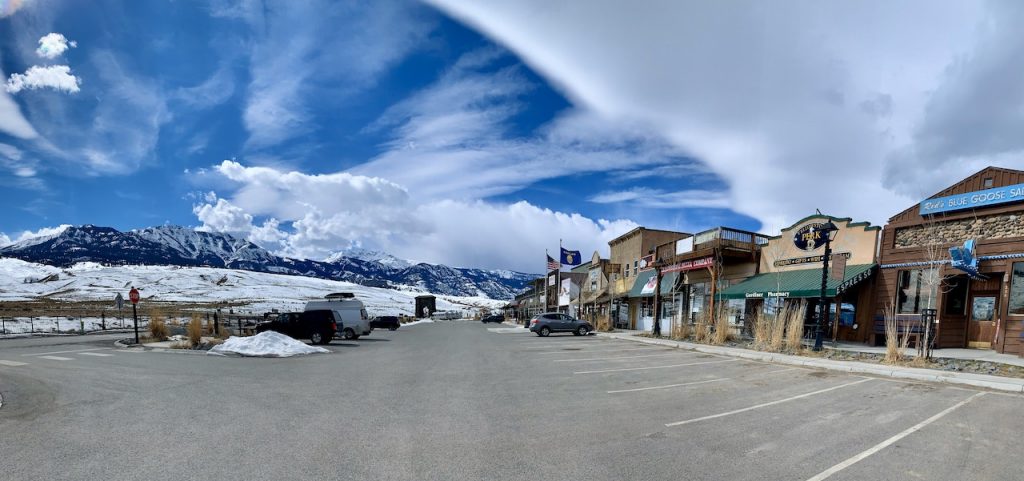
The Gateway Communities
Since March is such a slow month, many of the small towns that surround Yellowstone are pretty empty. Do not expect all the restaurants, shops, or even hotels to be open. I get that this may be an incredible inconvenience to visitors, but that is life in these rural regions. By June, the owners and employees of the small towns will be working extremely long and exhausting hours. March is a time to collect one’s self and prepare for the busy season.
Don’t worry, though. You’ll still be able to find places to eat, sleep and even pick up a souvenir to take back home.


